Table of contents
- Basics: alternative drives What could drive us in the future
- Electric drive
- Hybrid
- Fuel cell
- Advantages and disadvantages of the alternatives
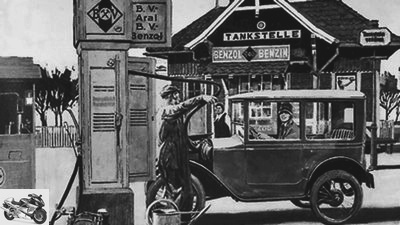
Aral
counselor
traffic & business
Basics: alternative drives
Basics: alternative drives
What could drive us in the future
Refueling was yesterday. And still is today. But tomorrow? One thing is certain: the oil reserves are running out. 2Rader is looking ahead to what could drive us in the future.
03/09/2009
There is still no reason to panic, but the following figures should give us cause for concern: Experts believe that global oil stocks will be sufficient for between 40 and 80 years if consumption does not decrease drastically. Almost 14 million tons of crude oil were mined worldwide in 2008 and consumed by mankind – every day. For several years, technicians and researchers have been working on finding alternatives to the world’s number one energy source, petrol made from crude oil. But the combination of extremely high energy density (one kilogram of gasoline stores twelve kilowatt hours) on the one hand and relatively simple production, transport and storage capacity on the other hand makes the fuel so unique. In comparison: Coal or methanol (alcohol) store only about half as much energy. But apart from the finiteness of its fuel, the internal combustion engine itself has a number of serious disadvantages-
parts: It not only produces emissions that are harmful to the climate; Around two thirds of the energy from the fuel is also lost in the form of unused heat or by overcoming internal friction, instead of being converted directly into propulsion. So it’s high time to say goodbye to this tech dinosaur? Nice. But what if the wheels should keep rolling? Of the alternatives presented on these two and the following pages, the topic of electric drives is currently the most hopeful. Even if electricity is also produced from oil, but not only.
Electric drive
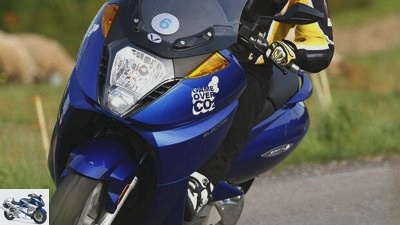
archive
From the USA, costs 10,000 euros in Germany: the e-scooter has 28 hp and can go up to 100 km / h. Range: a good 50 km. Charge the battery at the socket: three hours, www.vectrix.de
Anyone who has already had the opportunity to control an electric vehicle will experience this
don’t forget quickly: noiseless and powerful from the first meter. The latter in particular is an appealing idea for motorcyclists. Most electric vehicles need neither a clutch nor a gearbox, the maximum torque is available right from the start. Not only
in the car, also in the motorcycle sector
it already works a lot
E-prototypes and even some series-produced and commercially available models (see right). There is only one thing left to them all-
common: short range. Because there is still no battery that can store a large amount of energy in a small (and light) space – an even bigger problem with a motorcycle than in a car. E-bikes and scooters to be taken seriously currently have a range of 50 to 80 kilos-
meters until they have to go back to the mains for at least two to three hours or a fresh battery. Only such a battery currently weighs a good 20 kilos and has the format of a full-fledged car battery, but technically nothing more in common with it. Because how in cell phones is in vie-
len e-vehicles are already using modern lithium-ion technology. Their development continues. However, experts expect that the storage capacity will only double within the next ten years. The shelf life and life expectancy of a battery are also limited: around 1000 charging processes are possible. After around five years, a replacement can be due, which is still expensive: around 4,000 euros per battery. After all: the more batteries produ-
are adorned, the cheaper they become.
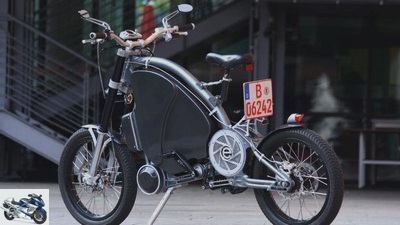
archive
eRockit: An electric motor multiplies the force developed by bicycle pedals, which means that the Berlin-built eRockit can reach speeds of up to 80 km / h. Suitable for motorways. Required driving license: A1, price: 28,000 euros. www.erockit.net
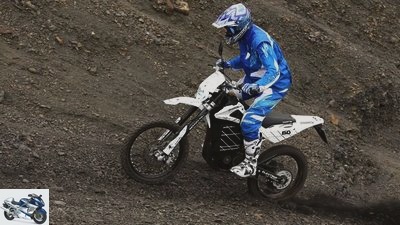
archive
Quantya Strada: Developed and built in Switzerland and available in Germany from around 9400 euros, this 80 km / h fast e-bike is available as a road and enduro version. For rent in two Quantya Enduro parks in southern Germany. Info: www.quantya.de
Hybrid
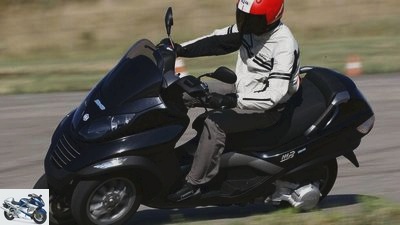
manufacturer
Immediately before its market launch: Piaggio wants to present the series-ready three-wheel hybrid scooter in Italy as early as May, initially with 125 cubic meters. Price: 10,000 euros. Other models are to follow soon
The hybrid drive is nothing more than the combination of a combustion engine and an electric motor. Which combines the advantages of both, but also brings with it a space and weight problem, since in addition to the already too large and heavy battery (see box below left) and electric motor, a single or even multi-cylinder is housed in the bike must become. In addition, two motors cost more than one and
for a meaningful coupling of the two is one
complicated and also expensive control necessary. However, once these hurdles have been overcome, the hybrid drive has only advantages: It not only offers a long range, it can even retrieve the energy that is normally converted into unused heat during braking and store it in the battery. The electric motor acts as a generator. This even turns the brake into a drive source – ingenious. Of course, the main part of electrical energy is produced by the internal combustion engine. Additionally, most hybrid vehicles can
can be charged at the socket and in short-distance operation also as a pure e-mobile, i.e.
can be operated without a combustion engine.
By activating the electric drive when accelerating, which costs the most fuel in conventional driving, the fuel consumption of hybrid vehicles is kept low. In the automotive sector, Toyota offered the first series-produced hybrid vehicle with the Prius model as early as 1997. It wasn’t until ten years later that Piaggio presented a petrol e hybrid, appropriately in the three-wheel scooter MP3, at that time still as a prototype. The start of the series-
According to Piaggio, production will take place as early as 2009.
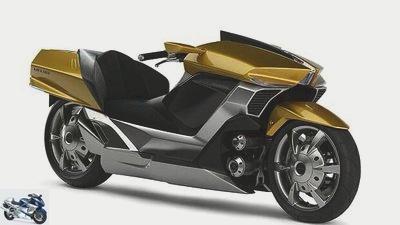
manufacturer
Yamaha Luxair Gold: So far, this motorcycle-scooter hybrid from Yamaha is unfortunately no more than a study. It was presented as a hybrid vehicle at the Tokyo Motor Show 2007, but then disappeared again
Fuel cell
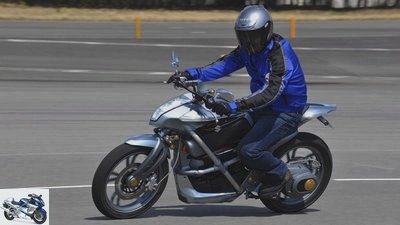
manufacturer
The Suzuki prototype was created on the basis of the ENV presented in 2005 by the British company Intelligent Energy (below)
Vehicles with fuel cell technology are purely electric vehicles, but their battery is permanently recharged while driving by means of said fuel cell. In simple terms, this is done through the energy generated by the reaction of the hydrogen and oxygen in the air inside the fuel cell. The big advantage: The energy is generated without any significant heat production, so the fuel cell has a very high level of efficiency. And the only exhaust gas that is produced is pure, harmless water. Another brilliant idea, but again not entirely unproblematic. Because the hydrogen required to generate energy can only be obtained with great expenditure of energy and then has to be refueled at an insanely low temperature of minus 253 degrees or under gigantic pressure of 350 bar and stored in the vehicle. Nevertheless, there are studies on the subject from the leading Japanese two-wheeler manufacturers. So far, Suzuki has leaned furthest out of the window with the Crosscage model (left). But Honda and Yamaha are also working on the topic of fuel cell two-wheelers, but have only published concepts in small scooters. The fuel cell drive must not be confused with the hydrogen engine. This is nothing more than a conventional internal combustion engine that runs on hydrogen as fuel. In Hamburg and Stuttgart, regular buses are already operated with this technology.
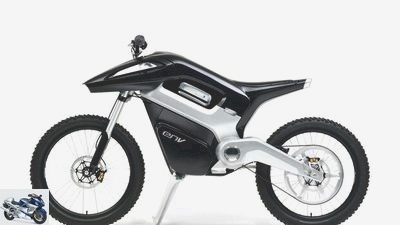
manufacturer
ENV: The ENV draws its electricity from a 1 kW fuel cell, has a top speed of 80 km / h and a range of 160 kilometers, according to the manufacturer.
Advantages and disadvantages of the alternatives
Electric drive: The star among all drive concepts. An electric motor converts more than 90 percent of the energy used into propulsion and, thanks to the maximum torque applied early, can even usually do without a gearbox. In addition, the electric motor shines with its low maintenance and low noise levels. The overall energy balance of the electric drive is determined by the efficiency of the power plant. Series production: Yes
Positive: Low-noise, high-torque, simple technology, mostly no gear required
Negative: Battery capacities are still limited, the batteries are heavy, the batteries are expensive, and the charging process is time-consuming
Hybrid: Combination of the combustion engine with an electric motor. The electric motor intervenes in the acceleration phase, thus enabling the use of a smaller combustion engine. The battery is charged by the conventional motor while driving and by energy recovery when braking. The electric motor can also serve as the sole drive over short distances. Series production: Yes
Positive: Range problem alleviated, batteries can be charged when braking, only electric operation possible
Negative: Complex technology, expensive, short range in electric motor operation
Fuel cell: The basis is a normal electric drive. To extend the range, a fuel cell acts like an on-board power plant that charges the batteries while driving. The fuel cell generates electricity from the reaction of hydrogen and oxygen, which only produces harmless water vapor. The storage and refueling of hydrogen is problematic. Series production: no
Positive: Charging while driving, no pollutant emissions, low noise
Negative: Expensive, hydrogen supply (filling stations) not very common, refueling and storage complex
Related articles
-
motorcycles Focus on alternative drives Focus on alternative drives Hybrid and electric motors If we talk today about what will move us tomorrow, it is…
-
Energica and Dell’Orto: partnership for electric drives
Energica Dellorto counselor technology & future Energica and Dell’Orto: partnership for electric drives Energica and Dell’Orto Partnership for electric…
-
Energica Eva Ribelle RS: New engine, new driving pleasure
News 2022 New motorcycle items for 2022 Markus Jahn 11 pictures Markus Jahn 1/11 The new EMCE engine from Energica drives the three well-known models…
-
Inventory outlook for two-wheeled electromobility
Arturo Rivas 9 pictures Energica / Jesus Robledo Blanco 1/9 E-motorcycles, which cost well over 20,000 and 30,000 euros, are rarely purchased as pure…
-
What actually drives: Erich Wunderlich
archive Sports & scene What actually drives: Erich Wunderlich What actually drives: Erich Wunderlich 20 questions for Erich Wunderlich He is clearly the…
-
Zero and Polaris: partnership on electric drives
Polaris counselor traffic & business Zero and Polaris: partnership on electric drives Zero and Polaris Partnership for electric drives The Indian parent…
-
What actually drives: Fritz W. Egli
archive Sports & scene What actually drives: Fritz W. Egli What actually drives: Fritz W. Egli 20 questions to Fritz W. Egli “I am lying in the hospital…
-
Delta-XE: Students build superbikes with electric drives
Electric superbike Twente 11 pictures Electric superbike Twente 1/11 As Team Electric Superbike Twente, Dutch students have put an electric superbike on…
-
Cornering Part 1: Technical and psychological basics
fact counselor workshop Cornering Part 1: Technical and psychological basics Cornering Part 1: Technical and psychological basics Drive properly through…
-
Basics: what happens at top speed?
jkuenstle.de counselor workshop Basics: What happens at top speed? Basics: top speed What happens at top speed? At almost 300 kilometers an hour, the…